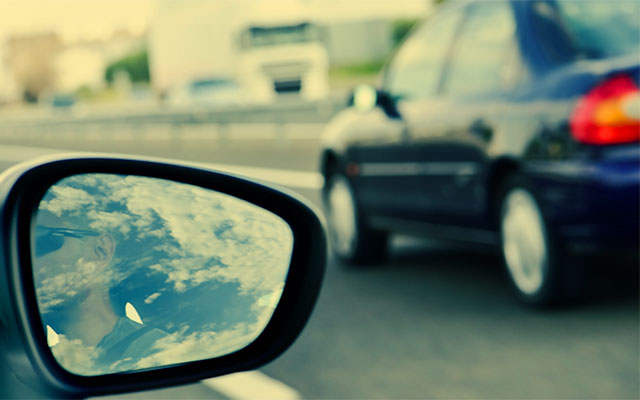You’re not expected to have eyes in the back of your head, but you do need to be aware of what's going on around you when driving. Vehicle blind spots were a contributing factor to 1,250 accidents in 2016 - demonstrating how important it is to always check them.

What's a blind spot?
A blind spot is the area of the road that can’t be seen by looking forward through your windscreen, or by using your rear-view and side-view mirrors. Blind spots can be large enough in size to easily block another car, motorbike, cyclist or pedestrian from your view.
How many blind spots are in a car?
The average car has 2 main blind spots, generally on the rear left and right side.
What’s an A-pillar blind spot?
In addition to the more commonly known blind spots at the side of your car, a vehicle's design can also create pillar blind spots. Pillars are located around the glass on your windows. The one which will impact you the most is the A-pillar, which is the material on either side of the windscreen that arches up into the roof. Though smaller than the main blind spots, at busy junctions consider what these pillars could be blocking.
When should I check my blind spots?
Check your blind spots when moving left or right - for example, when changing lanes. Also, remember to take extra care on busier roads where it's more likely that a pedestrian, cyclist or car could slip into your blind spots.
Can I fail my test because of blind spots?
As part of learning to drive you'll get into the habit of checking your blind spots. Each time you move off from the side of the road, expect to be assessed on whether you check the offside blind spot. On the emergency stop, you'll need to check both the nearside and offside blind spot. Failure to do so will result in a fault, and if it's considered a potentially dangerous fault, it'll be marked as serious.
Blind spot mirrors
EU law requires lorries to be fitted with blind spot mirrors, but you can also buy them for your car. They're curved mirrors which you can attach to your side-view mirrors giving you a wider field of vision. The angle of the blind spot mirror will let you see what the side-view mirror misses when positioned correctly.
Think bikes!
Back in 2014, The AA Charitable Trust launched a national campaign to raise awareness of the dangers cyclists and motorcyclists face on the road. Our AA-Populus poll showed that 9 out of 10 drivers admitted to finding it hard to see cyclists, and 55% of drivers are often surprised by a cyclist seeming to appear out of nowhere.
Blind spots play a huge part in this so the better understanding you have of what a blind spot is, and how to find it, the safer the roads will be for everyone.
When learning to drive, use our advice and remember to ask your instructor here your blind spots are and how best to check them. This'll stop you from being caught out by a blind spot and keep you safe on the road.
